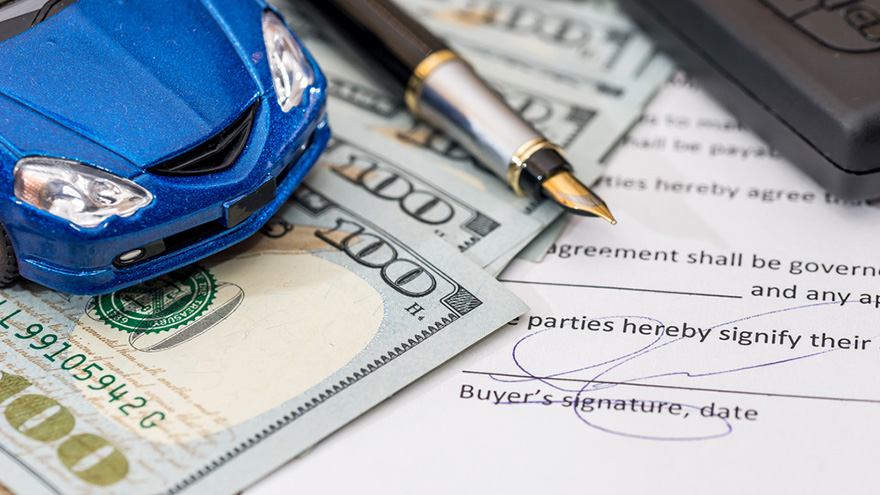Auto defaults rise again in August with evidence pointing to more

By subscribing, you agree to receive communications from Auto Remarketing and our partners in accordance with our Privacy Policy. We may share your information with select partners and sponsors who may contact you about their products and services. You may unsubscribe at any time.
ATLANTA and NEW YORK –
Auto defaults are slowly ticking up again, and the seeds for more might be germinating, too, as shown by the data assembled and shared by Cox Automotive, Equifax, Experian and S&P.
Let’s begin with data through August compiled for the S&P/Experian Consumer Credit Default Indices. According to S&P Dow Jones Indices and Experian, the auto default reading rose 3 basis points on a sequential basis to 0.34%, marking the second straight month of an uptick.
However, the auto default rate will have to climb at a much faster rate than it has during the past two month just to get back to what it was at the end of 2020. That’s when analysts pegged it at 0.64%.
And for a point of reference, the highest level that auto defaults have been in the past five years happened in both October and November of 2017 when the rate sat at 1.11%, according to data from S&P Dow Jones Indices and Experian.
How quickly auto defaults might rise back to that level certainly will be one of the main topics discussed throughout Used Car Week, which begins on Nov. 15 in Las Vegas. Cox Automotive continued the ongoing banter by referencing Equifax data in one of its industry updates also posted this week.
Cox Automotive said that Equifax estimated 1.4% of outstanding auto finance contracts were in accommodation as of the end of July, which was down from 1.5% four weeks earlier.
Subscribe to Auto Remarketing to stay informed and stay ahead.
By subscribing, you agree to receive communications from Auto Remarketing and our partners in accordance with our Privacy Policy. We may share your information with select partners and sponsors who may contact you about their products and services. You may unsubscribe at any time.
“Auto-loan performance deteriorated in August as declining unemployment benefits and loan accommodations led to increasing severe delinquencies,” Cox Automotive said. “Relative to the level of accommodation pre-pandemic, approximately 519,000 auto loans did not have payments due in August and had frozen statuses, which prevented them from deteriorating.”
Even with those contracts frozen, Cox Automotive cited Equifax again to mention delinquencies classified as 60 days or more increased in August for the third month in a row. However, the level still sat 1.8% lower year-over-year.
“In August, 1.20% of auto loans were severely delinquent, which was an increase from 1.15% in July and the highest severe-delinquency rate in five months,” Cox Automotive said. “Compared to a year ago, the severe delinquency rate was 1 basis point lower.
“In August, 4.53% of subprime loans were severely delinquent, which was an increase from 4.36% in July and the highest severe-delinquency rate in five months,” Cox Automotive went on to say. “Compared to a year ago, the subprime severe-delinquency rate was 18 basis points higher. Loan defaults increased in August and were up 1.9% year-over-year.”
Moving away from automotive to other parts of the credit market covered in the latest update included in the S&P/Experian Consumer Credit Default Indices, analysts said the composite rate — which represents a comprehensive measure of changes in consumer credit defaults — ticked 1 basis point lower in August to 0.39%.
Analysts added the bank card default rate fell 16 basis points to 2.35%, while the first mortgage default rate was unchanged at 0.27%.
Meanwhile, S&P and Experian noticed that three of the five major metro areas showed higher default rates in August compared to the previous month.
Chicago generated the largest increase, rising 4 basis points to 0.43%. New York ticked up 2 basis points to 0.44%, while Dallas inched up 1 basis point higher to 0.41%.
Los Angeles dropped 2 basis points to 0.34%, while Miami fell 3 basis points to 0.88%.
Jointly developed by S&P Indices and Experian, analysts noted the S&P/Experian Consumer Credit Default Indices are published monthly with the intent to accurately track the default experience of consumer balances in four key loan categories: auto, bankcard, first mortgage lien and second mortgage lien.
The indices are calculated based on data extracted from Experian’s consumer credit database. This database is populated with individual consumer loan and payment data submitted by lenders to Experian every month.
Experian’s base of data contributors includes leading banks and mortgage companies and covers approximately $11 trillion in outstanding loans sourced from 11,500 lenders.


